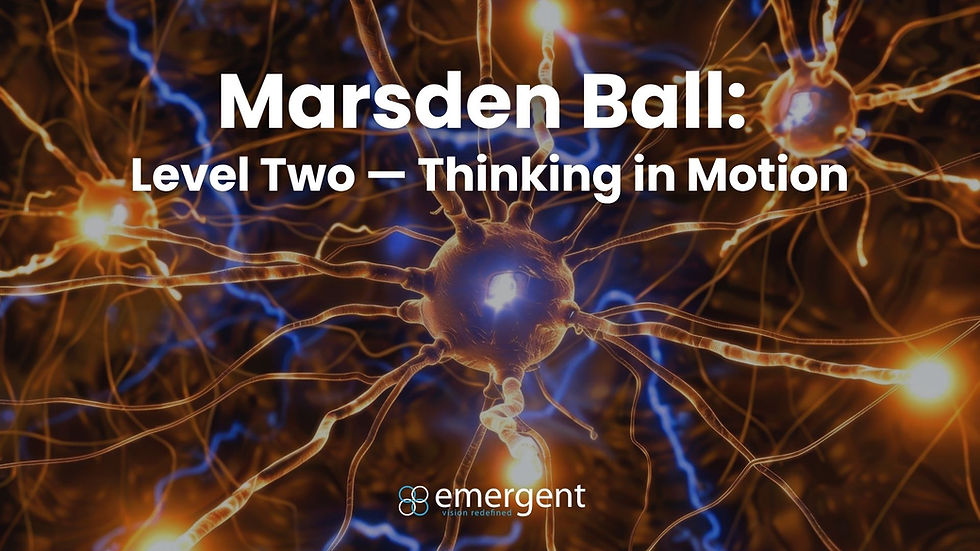Brock String Level Three: Seeing Clearly in Every Direction
- Robert Nurisio, COVT

- Jul 18
- 2 min read
Updated: Jul 23

Level Three of Brock String therapy, known as Variations of Gaze, challenges the visual system to maintain stability and coordination while the body or the environment shifts. Building on earlier levels that focused on basic convergence and flexible focus between multiple beads, this level introduces purposeful changes in head and string position. The goal remains the same: to see a clear, single bead with the X-shaped crossing of the string confirming proper eye alignment. But now the patient must achieve that same clarity across different angles and postures.
The activity begins by having the patient fixate on a bead while turning the head to the right, left, up, and down. The string stays still, but the shift in head position forces the visual system to recalibrate its alignment. In other variations, the patient’s head remains still while the therapist moves the string into different positions. Eventually, both the string and head may move together, sometimes in a circular pattern. Each variation demands a new level of awareness, flexibility, and real-time processing from the brain.
This level activates deeper sensory integration, especially the connection between the visual, vestibular, and proprioceptive systems. The vestibular system detects motion and balance, while proprioception tells the brain where the body is in space. Vision must now coordinate with both, adjusting rapidly and efficiently to shifting inputs. The patient learns to hold visual alignment even as their posture or field of gaze changes, reinforcing the kind of adaptability required in real-life settings—walking through crowds, turning while reading signs, or looking up during sports.
These movements also deepen the patient’s connection to Skeffington’s “Where am I?” and “Where is it?” processing systems. Turning the head or moving the string demands more than just ocular control; it calls on the brain to maintain a stable body map while localizing targets within that map. This is critical for children with disorientation, adults recovering from concussion, or athletes needing to track targets in motion. The therapy becomes about more than just seeing clearly—it’s about feeling centered in the world.

As patients move through this level, they begin developing a more refined feeling tone, the internal sense of “this is what it feels like when my visual system is working right.” Rather than depending on the therapist to confirm progress, patients can start identifying for themselves when their visual system is engaged, balanced, and responsive. This type of self-monitoring is essential for independent functioning and long-term success beyond the therapy room.
Level Three is where the Brock String becomes more than a convergence tool. It becomes a full-body experience in spatial coordination and visual awareness. By reinforcing eye teaming across various directions and movements, it prepares patients for real-world challenges where vision doesn’t happen in a vacuum. It happens while we move, shift, reach, and turn—and this level ensures the visual system can keep up.





Comments